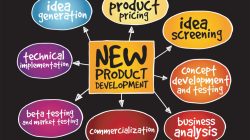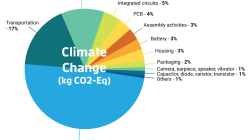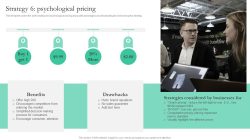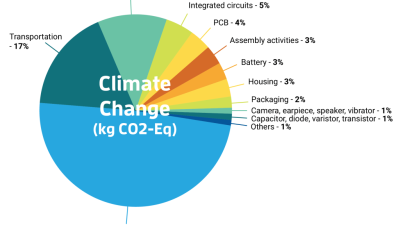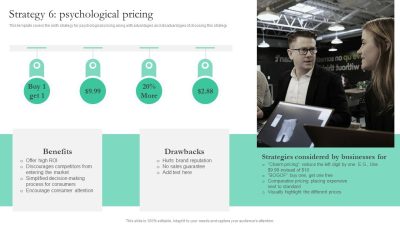Digital Marketing Strategies to Boost Online Sales of Electronic Products are your gateway to unlocking unparalleled success in the competitive world of electronics. In today’s digital era, understanding the nuances of online marketing specific to electronic products is crucial. With the right approaches, such as targeted customer personas and effective use of digital channels, businesses can elevate their online presence and drive impressive sales growth.
From leveraging content marketing to engage consumers to optimizing email campaigns for maximum reach, every strategy plays a vital role in attracting and retaining customers. As technology evolves, so too must our marketing techniques, ensuring that your electronic products stand out in a crowded marketplace.
Understanding Digital Marketing for Electronics
Digital marketing plays a crucial role in the electronics industry, where competition is fierce and consumer preferences are constantly evolving. The fundamentals of digital marketing for electronic products hinge on leveraging various online platforms to reach potential buyers, create engaging content, and build lasting relationships with consumers. By utilizing targeted strategies, businesses can effectively enhance their online presence and drive sales.A critical aspect of digital marketing is understanding customer personas specific to electronic consumers.
These personas help businesses tailor their marketing efforts to meet the needs and preferences of their target audience. By identifying demographics, interests, and purchasing behaviors, companies can create more effective campaigns that resonate with their customers.
Significance of Customer Personas
Creating detailed customer personas is essential for effective targeting of electronic products. These personas represent segments of the market and provide insights into buying motives and preferences. Here are some key factors to consider when defining customer personas for electronics:
- Demographics: Age, gender, income level, and location significantly influence purchasing decisions in the electronics market.
- Buying Behavior: Understanding how consumers shop for electronics, including their preferred platforms and decision-making processes, is vital for strategic marketing.
- Interests and Values: Knowing what interests your customers—such as sustainability, cutting-edge technology, or brand loyalty—can shape your marketing message.
By leveraging these insights, businesses can create targeted advertisements that speak directly to their ideal customers, ultimately leading to higher conversion rates and brand loyalty.
Main Digital Channels for Promoting Electronic Items
Several digital channels are particularly effective for promoting electronic products, each offering unique advantages for reaching the target audience. Understanding the strengths of these channels can enhance a company’s marketing strategy:
- Social Media Advertising: Platforms like Facebook, Instagram, and Twitter allow brands to engage with consumers through visually appealing ads and interactive posts, fostering community and brand loyalty.
- Email Marketing: Sending personalized and relevant emails to target customers can keep them informed about new products, promotions, and updates, ensuring ongoing engagement.
- Search Engine Marketing (SEM): Utilizing pay-per-click (PPC) campaigns on search engines like Google helps businesses target customers actively searching for electronic products, driving quality traffic to their websites.
- Content Marketing: Creating valuable and informative content, such as blogs, videos, and tutorials, can establish a brand as a trusted authority in electronics, attracting and retaining customers.
In a rapidly changing market, staying ahead of digital trends is essential for electronics brands. Companies that effectively utilize these digital channels can significantly enhance their visibility and sales, positioning themselves as leaders in the electronics space.
Content Marketing Strategies
Effective content marketing is pivotal in showcasing the myriad benefits of electronic products, capturing the attention of potential buyers and fostering engagement across various platforms. By strategically curating content that resonates with audiences, brands can significantly enhance online sales while establishing a strong presence in the competitive electronics market.
Benefits of Electronic Products
The advantages of electronic products extend beyond mere functionality; they enhance convenience, streamline tasks, and improve overall quality of life. Highlighting these benefits through well-crafted content can attract potential customers. Consider emphasizing the following key points:
- Efficiency: Electronic devices are designed to simplify daily tasks, from smart home devices that automate routines to smartphones that keep us connected on the go.
- Innovation: The rapid advancement of technology introduces cutting-edge features that not only improve performance but also offer unique user experiences.
- Environmental Impact: Many modern electronics are designed with sustainability in mind, promoting energy efficiency and reducing waste through recyclable materials.
Curating Engaging Content for Social Media Platforms
To create compelling content on social media, it is essential to maintain a balance between informative and entertaining material. Here are several proven methods to enhance engagement:
- Visual Storytelling: Use high-quality images and infographics that illustrate product features and benefits. For example, a visually striking infographic detailing the energy savings of an eco-friendly appliance can capture attention.
- User-Generated Content: Encourage customers to share their experiences with your products. This authentic feedback can be showcased on your social channels, building community trust.
- Interactive Content: Create polls, quizzes, or challenges related to your products. For instance, a quiz on choosing the right gadget can engage users while subtly promoting product knowledge.
Utilizing Video Marketing to Showcase Electronic Gadgets
Video marketing has become a cornerstone of digital strategy, particularly in the electronics sector. Videos can effectively demonstrate product features, providing potential buyers with a closer look at what they can expect. Key approaches include:
- Product Demos: Create short, engaging videos that showcase the functionality of new devices. Highlight unique features, such as a smartphone’s camera capabilities during a live photography challenge.
- Tutorials: Produce how-to videos that guide users through product setup and usage. For example, a step-by-step video on setting up a smart home system can alleviate customer hesitation.
- Customer Testimonials: Feature satisfied customers sharing their positive experiences with your products. Authentic testimonials can dramatically influence potential buyers’ decision-making.
Email Marketing Campaigns: Digital Marketing Strategies To Boost Online Sales Of Electronic Products
Email marketing remains a powerful tool for promoting electronic products, especially during product launches. An effective email marketing campaign can engage customers, inform them about new products, and drive sales. By utilizing appealing designs and strategic segmentation, brands can maximize their outreach and conversion rates.
Email Marketing Template for New Product Launch
Designing an email marketing template for a new electronic product launch should focus on captivating visuals and a clear call to action. A well-structured template could include:
Header
Eye-catching logo and product image.
Hero Section
A bold, attention-grabbing headline such as “Introducing the Future of Home Entertainment!” alongside a stunning image of the product.
Body
A brief overview highlighting the key features and benefits, such as “Experience immersive sound and stunning visuals with our latest 4K Smart TV.” Incorporate bullet points for clarity.
Call to Action
A prominent button with phrases like “Shop Now” or “Learn More” that directs customers to the product page.
Footer
Include social media links, unsubscribe options, and customer service contact information.
Segmentation Strategies for Email Lists
Segmenting email lists based on customer behavior is crucial for delivering personalized content that resonates with recipients. Effective strategies include:
Purchase History
Tailor emails based on previous purchases, such as sending recommendations for related products or accessories.
Engagement Level
Differentiate between active buyers and those who haven’t interacted in a while. Send re-engagement emails with special offers to less active customers.
Demographics
Utilize age, location, and gender to send targeted promotions. For instance, promote family-friendly electronics to parents or gaming systems to younger audiences.
Browsing Behavior
Monitor customer activity on your website. If a customer views a particular product multiple times, send them an email that highlights the product’s features or a limited-time discount.
A/B Testing Techniques for Email Campaigns
A/B testing is essential for optimizing email campaigns and enhancing both open and conversion rates. Consider the following techniques:
Subject Line Testing
Experiment with different subject lines to determine which ones lead to higher open rates. For example, contrasting a straightforward subject like “New Smartwatch Available” with an intriguing one like “Discover the Smartwatch That’s Changing the Game.”
Content Variation
Test different email content layouts and styles, such as short versus long descriptions, or images versus text-heavy emails, to see which format yields better engagement.
Call to Action Placement
Change the placement of the call-to-action button within the email. For instance, try positioning it at the top for immediate visibility versus at the bottom after detailed information.
Timing of Sends
Analyze open rates based on the time and day emails are sent. You might find that sending emails on weekends results in higher engagement for certain segments.
“Effective email campaigns are data-driven. Every test provides insights that help refine future strategies.”
Social Media Advertising
Social media advertising has become a critical component in the marketing strategies for electronic products. Platforms like Facebook and Instagram offer unique opportunities to engage with potential customers through targeted ads, dynamic content, and user interaction. By leveraging these platforms, brands can effectively showcase their electronic products, drive awareness, and ultimately boost sales.Effective social media advertising requires adherence to specific best practices that can enhance visibility and engagement.
Understanding which types of content resonate with your audience is crucial, as is the ability to analyze performance metrics and adjust campaigns accordingly. Incorporating storytelling and brand personality into advertisements can create a more relatable and engaging experience for users.
Best Practices for Running Ads on Facebook and Instagram
When it comes to advertising on social media, there are several best practices that electronic brands should follow to maximize their impact. The following points highlight these practices:
Target Audience Segmentation
Clearly define target demographics based on interests, behaviors, and purchase history. Utilizing Facebook’s and Instagram’s robust targeting options can improve ad relevance and reach.
Engaging Visual Content
Use high-quality images or videos that highlight the unique features of the electronic products. For example, a sleek smartphone showcasing its camera quality through vibrant imagery can attract potential buyers.
Compelling Copywriting
Craft concise and persuasive ad copy that communicates the value proposition effectively. Highlight promotions, features, and benefits that differentiate your product from competitors.
Utilization of Stories and Reels
Leverage Instagram Stories and Reels to create short, engaging video content that showcases product usage or customer testimonials. This format can capture attention quickly and enhance viewer engagement.
A/B Testing
Regularly conduct A/B tests on different ad formats, visuals, and copy to identify what resonates best with your audience. This data-driven approach allows for continuous improvement of ad performance.
Retargeting Campaigns
Implement retargeting strategies to reach users who have previously interacted with your brand or product. This can increase conversion rates by reminding potential customers of their interest.
Examples of Successful Social Media Campaigns for Electronics
Examining successful campaigns can provide valuable insights into effective strategies. Some notable examples include:
Apple’s iPhone Launch Campaign
Apple effectively utilized Facebook and Instagram to generate buzz during the launch of new iPhone models. The campaign featured visually stunning ads showcasing innovative features, supported by the hashtag #iPhone.
Samsung’s #DoWhatYouCant Campaign
Samsung engaged users by encouraging them to share their experiences with Samsung products through the hashtag #DoWhatYouCant. This campaign not only highlighted product features but also fostered a community of user content.
Sony’s PlayStation 5 Promotion
During the launch of the PlayStation 5, Sony created immersive video ads that showcased gameplay and exclusive features. The campaign also included influencer partnerships to amplify reach across social platforms.
Utilizing User-Generated Content in Social Media Marketing
User-generated content (UGC) can significantly enhance social media marketing efforts by leveraging customer experiences and testimonials. UGC builds trust and credibility among potential buyers. Here are recommended strategies for utilizing UGC effectively:
Encourage Customers to Share Their Experiences
Prompt users to post pictures or videos of themselves using your electronic products. This can be incentivized through contests or giveaways.
Create a Unique Hashtag
Develop a branded hashtag that customers can use when sharing their content. This makes it easy to track UGC and creates a sense of community.
Feature UGC in Marketing Materials
Incorporate user-generated content into your advertising campaigns. Highlighting real customers enjoying your electronic products can drive authenticity and relatability.
Engage with Customers
Interact with users who share content by commenting or reposting their content on your official pages. Engaging with customers fosters loyalty and encourages more users to share their experiences.
Showcase UGC on E-commerce Platforms
Display user-generated content on your product pages. This not only enriches the shopping experience but also serves as social proof, encouraging conversions.By implementing these best practices and strategies, businesses can enhance their social media advertising efforts, creating compelling campaigns that resonate with audiences and drive sales for electronic products.
Search Engine Marketing (SEM)

Search Engine Marketing, particularly through pay-per-click (PPC) campaigns, is an essential tool for boosting online sales of electronic products. By strategically placing ads in search engine results, businesses can target potential customers actively looking for electronic items, thus increasing visibility and driving conversions.
Steps to Create an Effective PPC Campaign for Electronic Items
Creating a successful PPC campaign involves several critical steps. Each of these steps ensures that your ads reach the right audience while maximizing your budget effectively.
- Define Campaign Goals: Establish clear and measurable objectives such as sales targets, lead generation, or brand awareness.
- Conduct Research: Use tools like Google Planner to identify relevant s that potential buyers use when searching for electronic products.
- Create Compelling Ad Copy: Write clear and engaging ads that highlight features, benefits, and unique selling propositions of your electronic products. Include calls-to-action to prompt clicks.
- Select Target Audience: Use demographic, geographic, and behavioral targeting to reach the most relevant audience for your electronic devices.
- Set a Budget and Bids: Decide how much you are willing to spend daily and select a bidding strategy that aligns with your campaign goals.
- Design Landing Pages: Ensure that the landing pages are optimized for conversions, featuring a seamless user experience and relevant product details.
- Monitor and Optimize: Regularly review ad performance metrics and adjust bidding, s, and ad copy based on data analytics.
Comparison of Different Bidding Strategies in SEM for Electronics
Selecting the right bidding strategy is crucial for maximizing the effectiveness of your SEM campaigns for electronic products. Here’s a comparison of popular bidding strategies:
The right bidding strategy can significantly impact the return on investment (ROI) of your PPC campaigns.
- CPC (Cost Per Click): This traditional strategy allows you to pay only when someone clicks on your ad. It is beneficial when driving traffic is the primary goal.
- CPM (Cost Per Mille): This strategy charges you for every 1,000 impressions. It is useful for brand awareness but may not directly lead to sales conversions.
- CPA (Cost Per Acquisition): This strategy focuses on paying for conversions rather than clicks. It’s ideal for businesses aiming for specific sales outcomes.
- Enhanced CPC: This automated bid strategy adjusts your maximum CPC bids based on the likelihood of conversion, making it a balanced option for efficiency and effectiveness.
Using Retargeting Ads to Recapture Lost Visitors for Electronic Sales
Retargeting ads are an effective way to engage users who have visited your site but did not make a purchase. By re-engaging these potential customers, you can enhance conversion rates for electronic products.
Retargeting ads help remind potential buyers of products they showed interest in, increasing the chances of conversion.
To implement a retargeting strategy effectively:
1. Set Up Tracking Pixels Integrate tracking pixels on your website to collect data on visitor behavior. This data will inform your retargeting campaigns.
2. Segment Audiences Classify visitors based on their actions, such as those who viewed specific products or added items to their cart but did not complete the purchase.
3. Create Tailored Ads Design ads that resonate with the segmented audience. Highlight products they viewed or offer incentives, such as discounts, to encourage return visits.
4. Choose the Right Platforms Utilize platforms like Google Ads or social media channels that support retargeting ads to reach your audience effectively.
5. Monitor Performance Continuously analyze the performance of your retargeting campaigns and adjust your strategy based on data to improve conversion rates.By implementing these strategies in your SEM efforts, you can significantly enhance online sales of electronic products and cultivate a loyal customer base.
Influencer Partnerships
Collaborating with influencers has become a game-changing strategy in digital marketing, especially for electronic products. By leveraging the reach and authority of trusted voices in the tech community, brands can effectively boost visibility and sales. Influencer partnerships can create authentic connections with potential customers, making it essential to choose the right influencers for your brand.Selecting suitable influencers involves a careful process that considers various factors.
First, it’s crucial to identify influencers whose audience aligns with your target demographic. This can be done by analyzing their follower statistics, engagement rates, and the type of content they produce. In addition, assessing the influencer’s prior collaborations and how those align with your brand’s values and products is key. Transparency and authenticity are vital; the more genuine an influencer’s endorsement feels, the more effective it will be.
Benefits of Collaborating with Tech Bloggers and Reviewers
Partnering with tech bloggers and reviewers offers a multitude of advantages for brands looking to promote electronic products. These influencers are often seen as experts in their field, which can lend credibility to your product. By collaborating with them, brands can tap into their established trust with followers.The following points Artikel the specific benefits of such collaborations:
- Enhanced Credibility: Tech bloggers provide unbiased reviews that can establish trust among potential customers.
- Targeted Reach: Influencers often have a niche audience, allowing brands to reach a specific demographic effectively.
- Content Creation: Influencers produce high-quality content that showcases your products in practical, relatable contexts.
- Increased Engagement: Followers of tech influencers are often eager to engage, leading to higher interaction rates and potential sales.
- Benefits: Collaborations can lead to backlinks from respected blogs, improving your brand’s online visibility.
Checklist for Negotiating Partnership Terms with Influencers
Negotiating partnership terms with influencers requires clarity and mutual understanding. Having a checklist ensures that all important aspects are addressed, leading to a successful collaboration. Here’s a concise checklist to guide the negotiation process:
- Define Objectives: Clearly Artikel what you want to achieve from the collaboration (e.g., increased sales, brand awareness).
- Specify Deliverables: Set expectations for content type, posting schedule, and formats (reviews, unboxing videos, etc.).
- Discuss Compensation: Determine payment structure, whether monetary or in product exchange, and establish timelines for payments.
- Review Rights: Clarify who owns the content created and how it can be used post-campaign.
- Set Performance Metrics: Decide on how success will be measured (e.g., engagement rates, sales generated, traffic driven).
“The strength of an influencer partnership lies in its authenticity—selecting the right influencers can transform your marketing strategy.”
Measuring Digital Marketing Success
Measuring the success of your digital marketing efforts is crucial in determining how effectively you are boosting online sales of electronic products. By tracking key performance indicators (KPIs), you can gauge the performance of your marketing campaigns and make data-driven decisions for future initiatives. Understanding what to measure allows you to optimize your strategies and maximize your return on investment (ROI).Key performance indicators (KPIs) serve as vital metrics that help you assess the effectiveness of your digital marketing campaigns.
Tracking these indicators ensures you remain aligned with your business goals and can identify areas needing improvement. The following are essential KPIs to monitor for online sales of electronic products:
Key Performance Indicators (KPIs)
It is important to focus on specific KPIs that align with your digital marketing objectives. Below is a summary of crucial KPIs to consider:
- Conversion Rate: The percentage of visitors who complete a desired action, such as making a purchase. This metric indicates the effectiveness of your marketing efforts in driving sales.
- Customer Acquisition Cost (CAC): The total cost associated with acquiring a new customer, including marketing expenses. Lowering CAC while increasing customer acquisition is a strong indicator of successful marketing.
- Return on Ad Spend (ROAS): The revenue generated for every dollar spent on advertising. A higher ROAS signifies effective ad campaigns and efficient spending.
- Website Traffic: The number of visitors to your website, which helps evaluate the reach of your marketing campaigns. Analyzing traffic sources also offers insights into which channels are most effective.
- Average Order Value (AOV): The average amount spent by customers per transaction. Increasing AOV can significantly boost overall sales.
- Customer Lifetime Value (CLV): The total revenue expected from a single customer throughout their relationship with your brand. High CLV indicates strong customer loyalty and effective retention strategies.
These KPIs provide a comprehensive overview of your digital marketing success and areas for potential growth.
Template for Reporting Digital Marketing Campaign Results
Utilizing a structured reporting template allows for clear and consistent evaluation of your digital marketing campaigns. Here’s a basic format you can follow to report your results:
| Campaign Name | Start Date | End Date | Objectives | KPIs Tracked | Results | Insights |
|---|---|---|---|---|---|---|
| [Campaign Name] | [Start Date] | [End Date] | [Objectives] | [KPIs] | [Results] | [Insights] |
This structured approach ensures clarity and makes it easier to analyze the effectiveness of each campaign.
Tools for Monitoring Website Traffic and User Engagement, Digital Marketing Strategies to Boost Online Sales of Electronic Products
Effective digital marketing relies heavily on understanding user behavior and traffic patterns. A variety of tools are available to monitor website traffic and user engagement, allowing marketers to gain valuable insights into their audience.Some of the most popular tools include:
- Google Analytics: Provides detailed insights into website traffic, user behavior, and conversion tracking. It allows users to analyze traffic sources, demographics, and more.
- SEMRush: Offers comprehensive tools for , traffic analytics, and competitive analysis. It helps identify trends in user engagement and traffic sources.
- Hotjar: Utilizes heatmaps and session recordings to visualize user interactions on your website. It helps understand how users navigate and engage with content.
- Crazy Egg: Similar to Hotjar, it provides heatmaps and user tracking tools, helping businesses understand where users click and how they scroll.
- Hootsuite: Primarily a social media management tool, it also provides analytics for social media traffic and engagement, allowing marketers to track their social campaigns’ performance.
Incorporating these tools into your digital marketing strategy can vastly improve your understanding of website performance and user engagement, setting the stage for informed decision-making and strategic adjustments.
Customer Retention Strategies
In the competitive landscape of electronic products, retaining customers is just as crucial as acquiring new ones. Implementing effective customer retention strategies can significantly boost repeat purchases and foster brand loyalty. By understanding and engaging with your customers after their initial purchase, you can create lasting relationships that encourage future transactions and enhance customer lifetime value.One of the most vital aspects of customer retention is creating loyalty programs that incentivize repeat purchases.
A well-structured loyalty program not only rewards customers for their repeated business but also encourages them to engage more with your brand. The following strategies can help in establishing effective loyalty programs:
Loyalty Program Development
Implementing a loyalty program requires careful consideration of the rewards and benefits you offer to your customers. Here are some strategies to build an enticing loyalty program for electronic product customers:
- Points System: Customers earn points for each purchase, which can be redeemed for discounts, freebies, or exclusive products. This straightforward approach simplifies the reward process, making it easy for customers to see their progress and benefits.
- Tiers of Membership: Create different loyalty tiers based on spending thresholds, where higher tiers unlock greater rewards. This encourages customers to spend more to reach higher loyalty levels, enhancing their engagement with your brand.
- Exclusive Access: Offer loyal customers early access to new product launches or special sales events, making them feel valued and appreciated. This exclusivity can drive excitement and a sense of belonging among your customer base.
- Referral Bonuses: Encourage existing customers to refer friends and family by providing incentives for both the referrer and the new customer. This strategy not only drives new customer acquisition but also strengthens the bond with existing customers.
Effective communication strategies are essential to maintain customer engagement post-purchase. Keeping customers informed and connected can enhance their experience and encourage repeat business. Here are several communication strategies to consider:
Post-Purchase Communication
Engagement after the purchase is critical for fostering loyalty and encouraging repeat sales. Implementing the following strategies can keep your customers involved with your brand:
- Personalized Follow-Up Emails: Send tailored emails thanking customers for their purchase and suggesting complementary products based on their buying behavior. A personal touch reinforces their choice and opens avenues for future sales.
- Product Usage Tips: Provide helpful content on how to maximize the use of their new electronic products. This could include tutorial videos, user guides, or tips that enhance their experience and satisfaction with the product.
- Exclusive Offers: Periodically send exclusive discounts or promotional offers to recent purchasers. This encourages them to return and shop again while feeling rewarded for their loyalty.
- Engagement through Social Media: Utilize social media platforms to engage customers by sharing user-generated content, product updates, and interactive posts. This keeps the conversation going and fosters a sense of community.
Encouraging customer feedback and testimonials plays a pivotal role in shaping your marketing strategy. Gathering insights from customers helps you improve your offerings and build trust with potential buyers. Here’s how to effectively encourage feedback:
Customer Feedback and Testimonials
Building a systematic approach to collecting customer feedback can provide invaluable insights into their experiences and satisfaction levels. The following methods can facilitate this process:
- Post-Purchase Surveys: Send simple, concise surveys after a purchase to gauge customer satisfaction. Offer incentives for completing the survey to boost participation rates.
- Review Requests: Encourage satisfied customers to leave reviews on your website or third-party platforms. Highlighting positive testimonials can enhance credibility and attract new customers.
- Social Media Engagement: Actively seek feedback on social media channels. Encourage customers to share their experiences and tag your brand, which can be leveraged for future marketing campaigns.
- Feedback Incentives: Offer discounts or loyalty points in exchange for detailed feedback. This not only drives engagement but provides you with more comprehensive insights into customer preferences and experiences.
Implementing robust customer retention strategies not only enhances customer loyalty but also drives sustainable growth in your electronic product sales.




